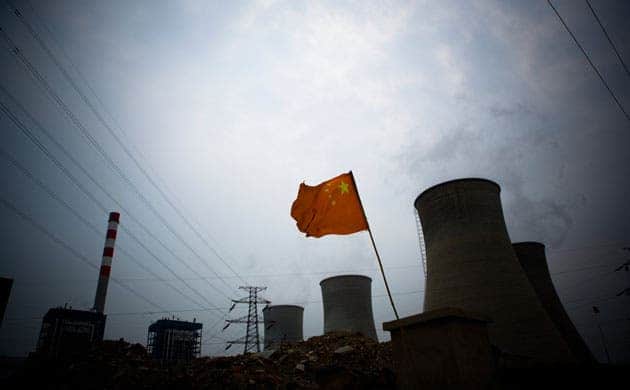
A Chinese flag flies in front of a coal-fired power plant in Tianjin, China. China is the world's biggest user of coal, and the world's biggest emitter of carbon. (c) Jeff Hutchens/Getty Images
In the past decade, it seems that greenhouse has emissions have remained constant each year, despite no important improvements were made – on the contrary CO2 levels have increased dramatically. The reason, reports a team of academicians who sought to explain the bafflement, after tweaking a statistical model to include sulfur emissions, is that coal power stations in China may be to blame for a lack of global warming since 1998.
As China entered a prosperous economical expansion, the countries industrialization process only accelerated. As such, Chinese coal consumption to produce power jumped to double between 2002 and 2007, which is an increase of around 26 percent in global coal consumption. Burning coal releases carbon dioxide and sulfur particles. Carbon dioxide traps heat from the Sun, raising temperatures. Sulfur particles in the air deflect the sun’s rays and can temporarily cool things down a bit.
“During the Chinese economic expansion there was a huge increase in sulphur emissions,” Dr Robert Kaufmann, of Boston University, told the journal Proceedings of the National Academy of Sciences.
Although it’s a double masking effect, scientists warn that this is a dangerous game to play. While CO2 and sulfur block each other out in the warming/cooling dance, sulfur particle pollution is dispersed a lot easier than CO2, which stays into the atmosphere much longer.
There are other factors linking to the plateau, however. Other studies argue that a combination of pollution, particular natural phenomena events (El Nino and La Nina, volcano eruptions etc.) and the sun’s natural cycles, all factor in to account for the past decade’s global warming pacing.
RELATED: How pollution can help to clean the air
The report was made by a team of two geographers and two economists headed by Professor Robert Kaufmann at the Department of Geography in Boston, who publish their results in a new paper titled Reconciling anthropogenic climate change with observed temperature 1998-2008 [PDF].
Meanwhile, a new research publish this week shows how warming oceans account for a much rapid ice caps melting than previously thought.









